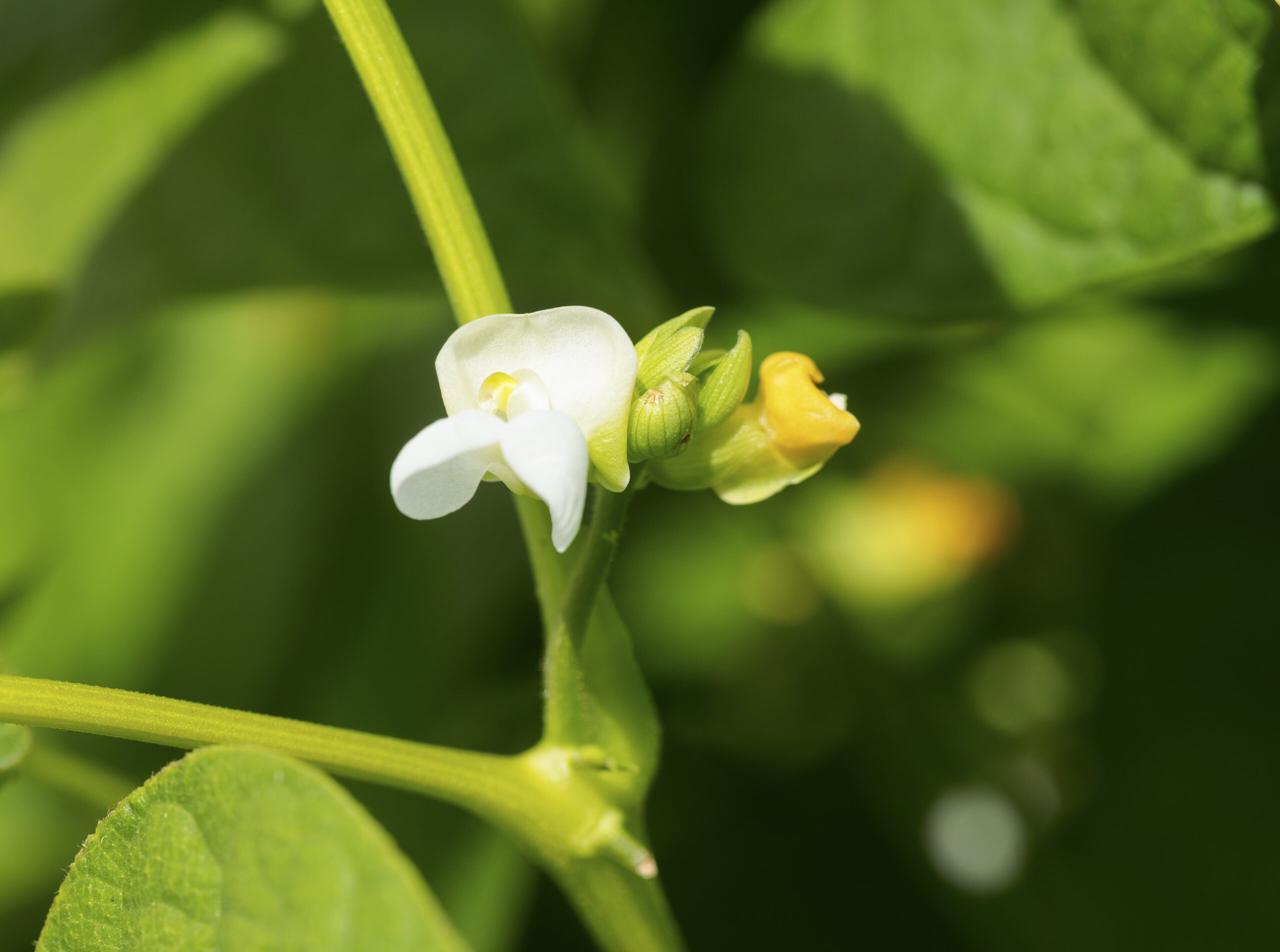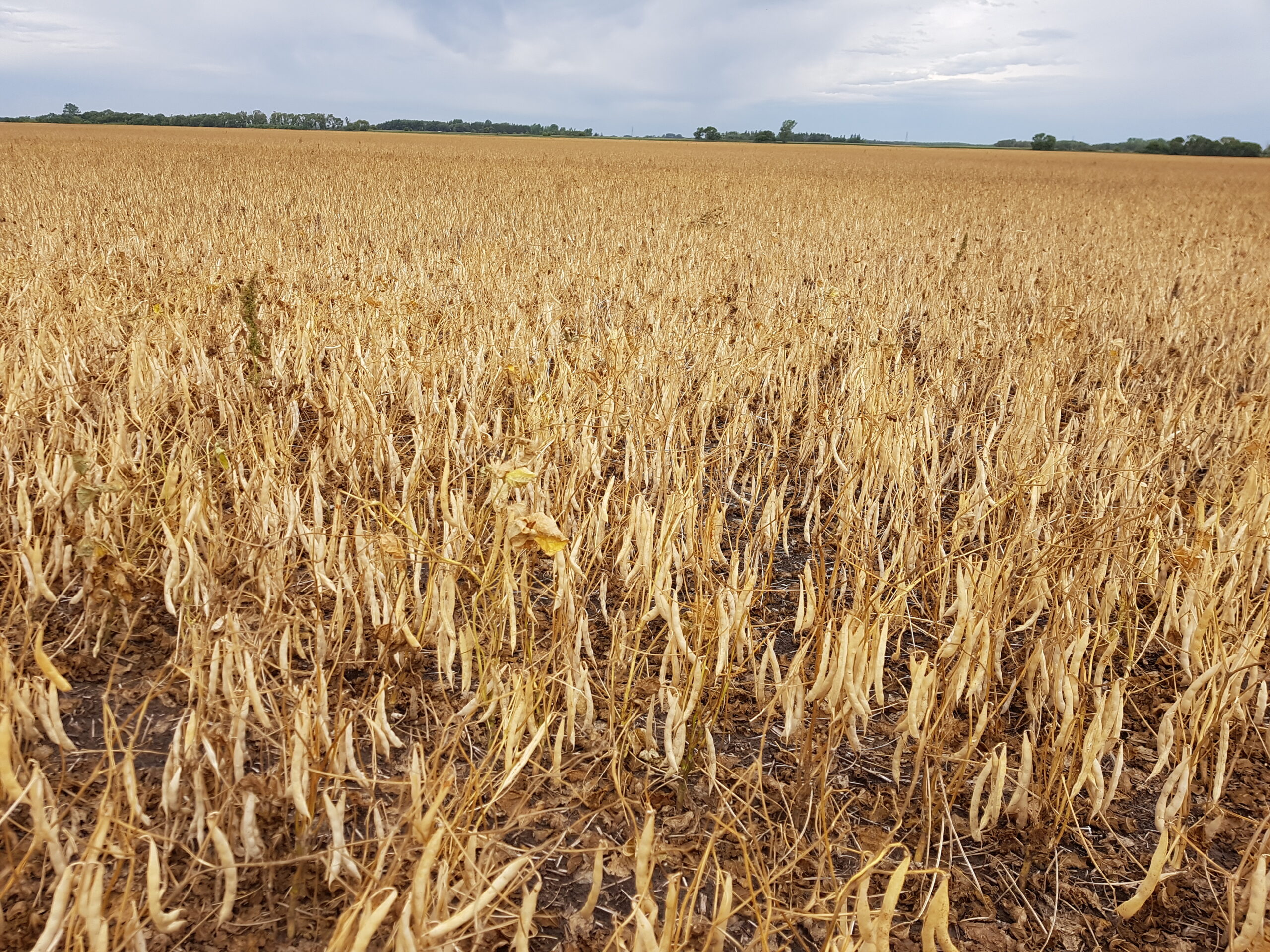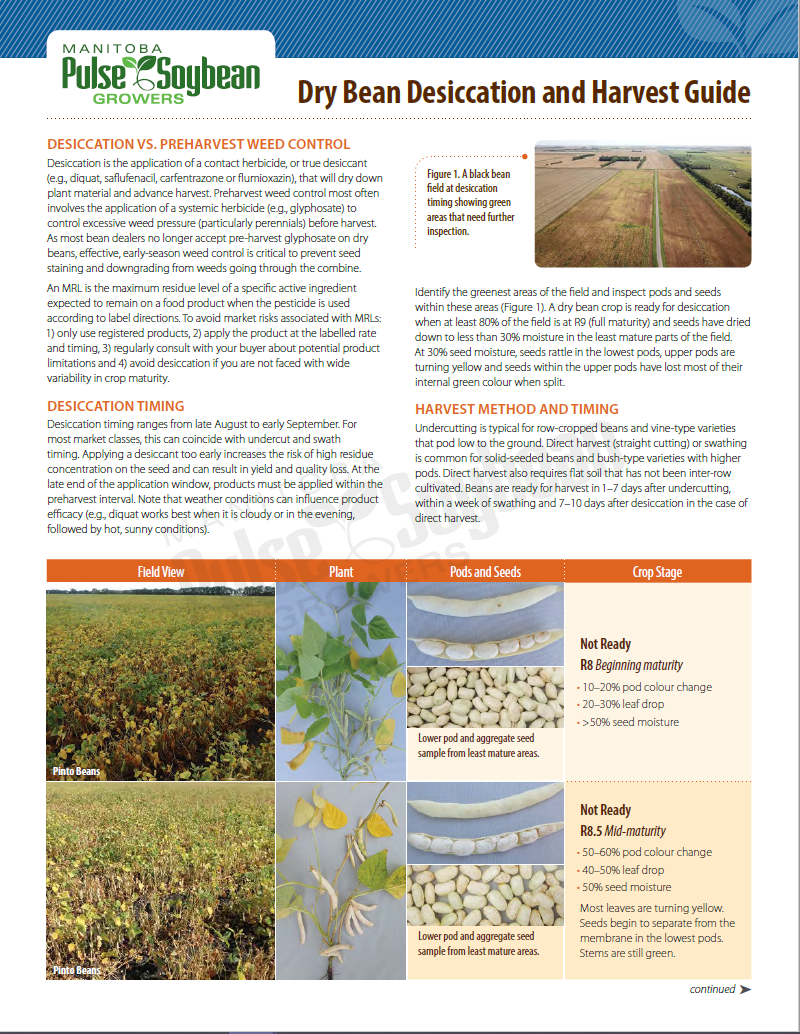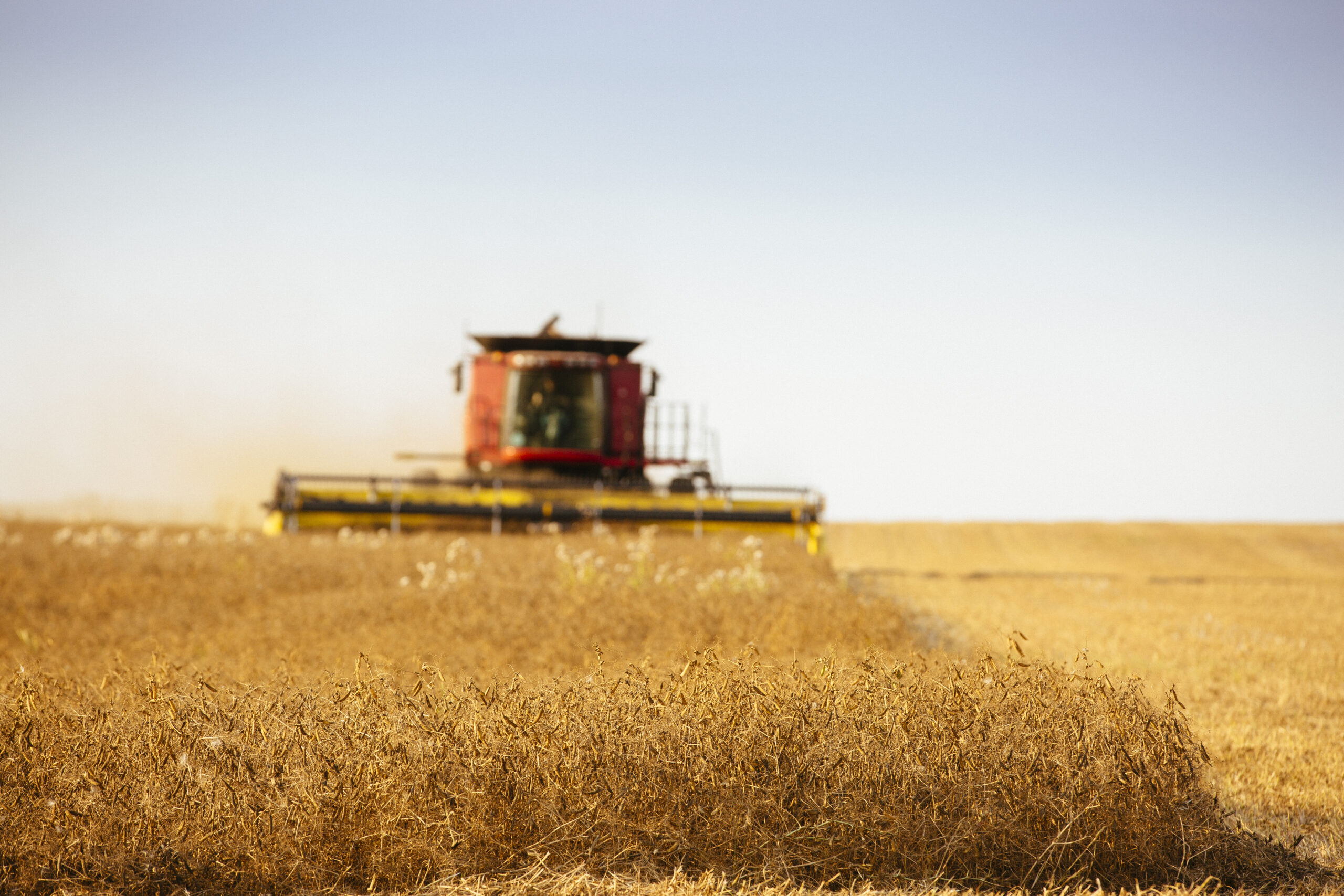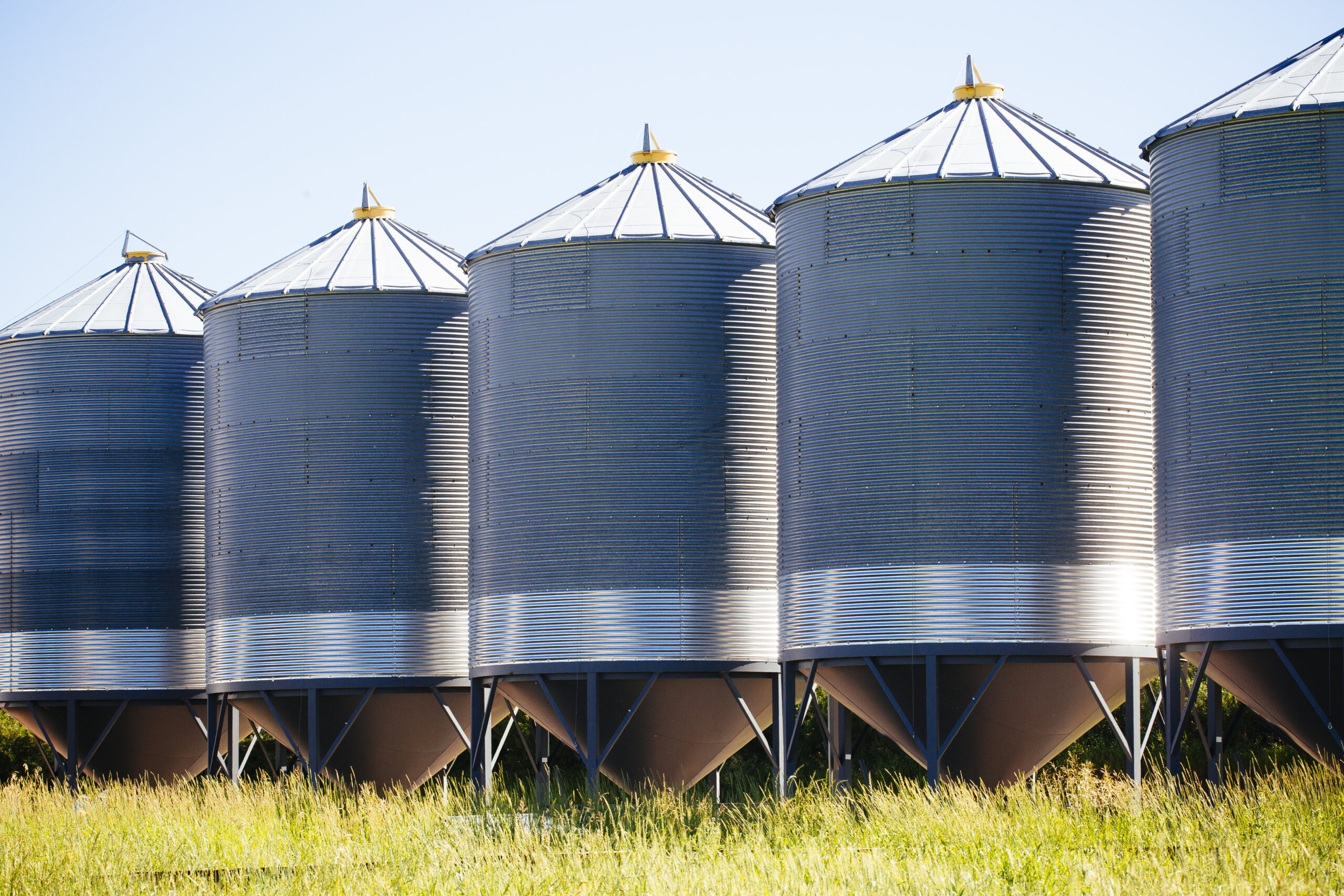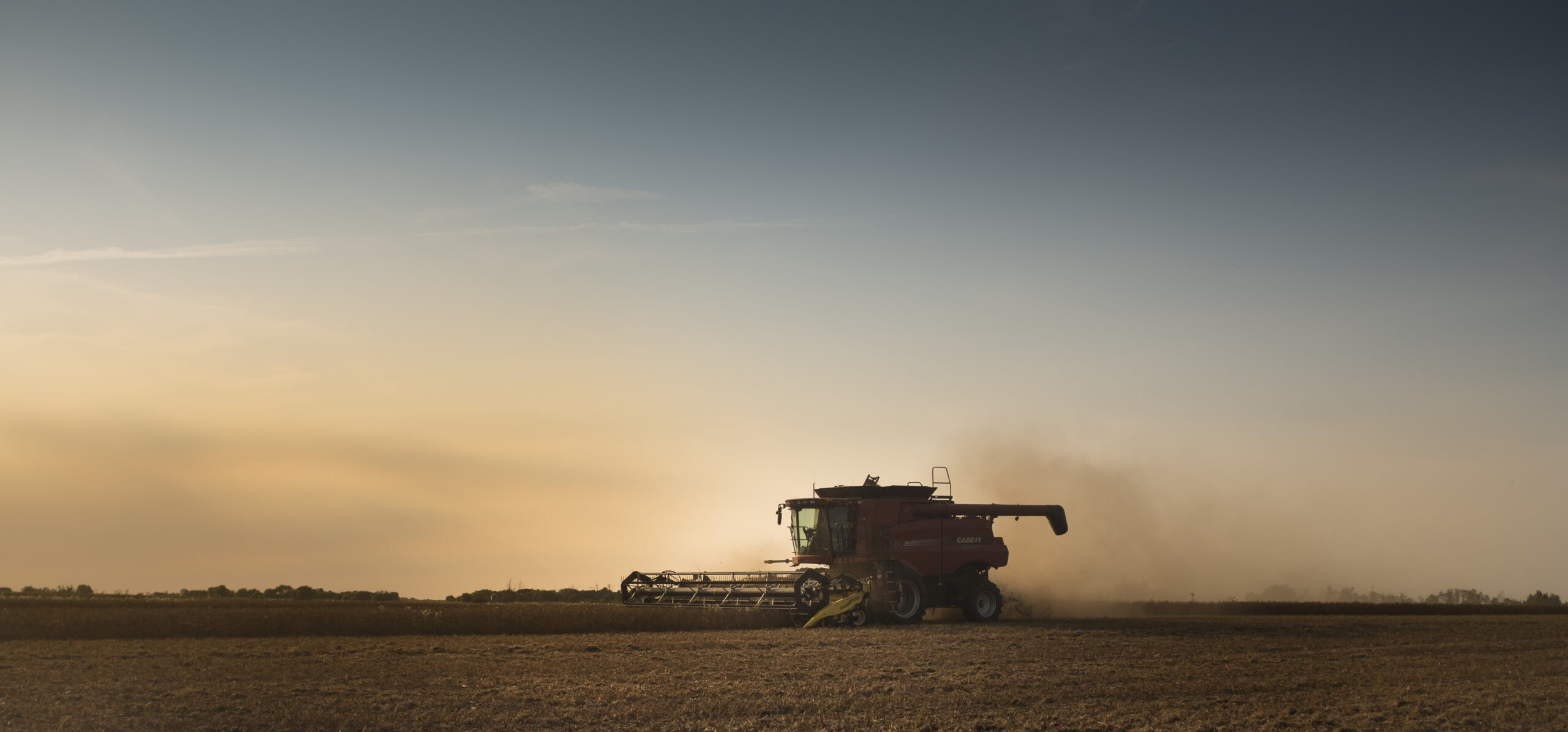Several different techniques are used to harvest dry beans focused on reducing seed damage and losses. Quality is very important, and seed coat colour and viability must be high for seeds headed to the edible market. Both earth-tag (soil stains on seeds) and stains from green leaves or immature weedy material are undesirable for marketing. Combines set improperly, or harvesting at low moisture can result in excessive cracking and breaking of seed. A lower pod set and shattering of ripe pods can result in large losses if harvesting is not done in a timely fashion with equipment set to minimize losses, which can be as high as 40%.
The first step is to determine when harvest activities should commence. The buckskin stage is a common term for describing pod colour when beans are close to maturity. At this stage, the beans have turned yellow, but the pods are still flexible. Even for determinate-type beans, all pods will not be at the same stage when harvesting activities begin. Depending on whether beans are pulled (undercut), swathed, or straight combined, the stage of the pods on the bottom, middle, and top of the plant will vary.
If beans are grown in row crop situations, they may be first pulled (undercut). Pulling beans involves cutting them off about one inch below the soil surface with either a fixed blade, rotary disc type, or rod-weeder type. Beans are then allowed to lay and dry for a period dependent on maturity and moisture. Pulling should start when the bottom pods are dry and most of the pods are yellow. Some immature pods will dry down in the row after being cut off if left for several days, but the risk of moisture wetting and moulding beans increases the longer they are laid out. If beans are quite mature, pulling may be done only an hour or two before combining to allow soil on the roots to dry. Six to 12 rows are then windrowed together to make a swath for combines to pick up. This usually is done shortly before combining to avoid potential wind damage to large fluffy swaths. Care should be taken to reduce shattering when windrowing. Early morning or evening can help reduce shattering losses to windrowing in some cases. Indeterminate vine-type beans grown in 30–36 in rows are best suited for this process.
Beans grown in solid-seeded systems are often swathed before combining. Swathing occurs at a similar stage to pulling, when 50–70% of the pods are in the buckskin stage. Most of the leaves will have dropped off the plant at this stage. A few leaves left on the plant will help limit shatter losses, but green material may gum up on the knife and require cleaning. Vine lifters and pickup reels can be beneficial to reduce losses by helping to get lower pods. As with pulling, swaths are susceptible to both wind damage and rotting if swaths get quite wet from rain.
Dry beans may also be straight cut when 75% of the pods are dry and the remaining pods are in the buckskin stage. The use of vine lifters or flex headers to maximize the ability to capture low pods can be helpful. Straight combining works best if the crop is even and free of green weedy material. There are desiccants registered for dry beans to assist in evening crop maturation and drying down green weedy material. Some products may leave residues and checking with your buyer for market acceptance of desiccants used is a good idea. Some products are also moved through the plant and should not be used if crops are grown for seed purposes.
Combining dry beans can be done with either special bean combines or rotary/conventional combines. Special bean combines such as the Bedwell or Lilliston have one or two cylinders. The bottom of the combine is a large screen and beans are moved around on conveyors to let dirt fall out. They are excellent for reducing damage to beans harvested in hot, dry conditions, especially when growing high-value-coloured beans. However, they are a significant investment and if beans are a smaller acreage on a grower’s farm, conventional combines and rotary combines can be used.
In general, rotary combines are gentler on beans than conventional combines, especially if you can keep the rotor full to help cushion the beans. Cylinder speeds should be set as low as possible and adjusted during the day as beans dry. Concave spacing should also be increased during the day as beans dry down. Conventional combines can be modified to be gentler on beans and allow more dirt to fall through earlier in the process to reduce earth-tag if a grower wants to have a combine for exclusive use on beans.
Combining dry beans should begin when seed moisture is between 16–22%, as combining below 14% greatly increases the risk of cracking. Moisture will fluctuate throughout the day and should be monitored as harvesting progresses. If moisture drops too low and cracking becomes an issue, waiting until moisture increases in the evening or early morning may be necessary.
Handling dry beans once harvested should be done as little as possible and as gently as possible to avoid cracking the seed. Even hairline cracks are of concern as they will widen during processing and are not desirable for canning. Conveyors should be used when at all possible and bin ladders to assist in filling bins can also help reduce damage.
Dry beans are often traded at 17% moisture but are considered dry at 16% moisture. Discounts for beans below 15% moisture may be applied. Aeration fans can be used to reduce the moisture of beans harvested at 18–22% moisture, but care should be taken to avoid over-drying. Some companies will take delivery directly from the combine to avoid damage from extra handling. If storing and hauling at later dates, care should be taken not to handle beans at very cold temperatures (less than -20°C), as the risk of cracking will increase.
Market grade determinates are based on the presence of damaged or heated seeds, foreign material, disease, seed uniformity, and the presence of off-type beans. Grading is done by the Canadian Grade Commission.
